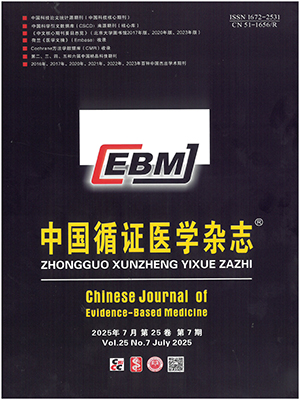Objective To research clinic characteristics, therapies and 2-year progress of female patients with Non-ST-segment Elevation Acute Coronary Syndrome (NSTE-ACS).
Methods This study was part of the internationalized Organization to Assess Strategies for Ischemic Syndromes (OASIS) registry. There was no intervention in the therapy. Patients admitted to hospital with NSTE-ACS (including unstable angina and non-Q wave myocardial infarction) were enrolled. The patients’ clinical characteristics, treatment procedure, major events in hospital and two-year progress were recorded by filling in Case Report Forms. Single-variate analyses were made between patients of difference genders.
Results A total of 2 294 patients with NSTE-ACS were enrolled in China. The female patients were 37.7% (n=864), whose mean age was 65.1±6.7 years. Unstable angina dominant (90.7%) was noted on admission. The percentage of patients with abnormal ECG was 92.6%. The prior hypertension and diabetes were 64.1% and 23.4%, respectively, in female patients which were evidently higher than those of males (P≤0.001). The prior coronary heart disease, old myocardial infarction, smoking, and percutaneous coronary intervention (PCI) were 39.4%, 16.8%, 11.7%, and 2.3% respectively, in females, which were evidently lower than in males (P≤0.001). The prior history of coronary artery bypass graft (CABG) surgery was 0.5% in females, which was evidently lower than in males (P≤0.05). During hospitalization, the therapeutic rates of anti-platelets and β-adrenergic blockers were 92.8% and 64.8%, respectively, in female patients, which were observably lower than in males (P≤0.05). The therapeutic rates of nitrates, angiotensin-converting enzyme inhibitor (ACEI), calcium antagonists, lipid lowering agents were 96.9%, 60.0%, 59.1%, and 47.1%, respectively, in females, which were not significantly different from those of males. The medication rate in females fell off gradually after discharge, which was more evident than in males. In two-year follow up, the therapeutic rates of anti-platelets, β-adrenergic blockers, ACEI, and lipid lowering agents were 68.4%, 39.5%, 27.4%, and 19.4%, respectively, in female patients, which were markedly lower than those in males (P≤0.05). During hospitalization, the therapeutic rates of PCI and CABG were 10.5% and 2.7%, respectively. In two year follow-up, their therapeutic rates were 13.4% and 4.8%, respectively. The rate of females performing revascularization procedures was evidently lower than that of males (P≤0.001), either during hospitalization or in two-year follow up. In two years of follow up, mortality and incidence rates of new myocardial infarction, stroke, heart failure, hospitalization because of refractory angina were 7.4%, 4.7%, 6.8%, 15.4%, and 31.3%, respectively, in female patients. There were no significant differences between females and males (P gt;0.05).
Conclusion Compared with male patients, female patients with NSTE-ACS are less likely to adopt and / or attach importance to treatment. As to the reason why there are no significant differences in major events of NSTE-ACS between females and males under the current circumstance that females’ treatment is inferior to males’, gender of females is an important protective factor.
Citation: ZHANG Jingtao,TAN Huiqiong,ZHU Jun,LI Jiandong,LIANG Yan,ZHANG Yan,LIU Lisheng. Two-Year Follow-up of Female Patients with Acute Ischemic Syndrome without ST Elevation. Chinese Journal of Evidence-Based Medicine, 2010, 10(8): 887-891. doi: 10.7507/1672-2531.20100514 Copy
Copyright © the editorial department of Chinese Journal of Evidence-Based Medicine of West China Medical Publisher. All rights reserved




